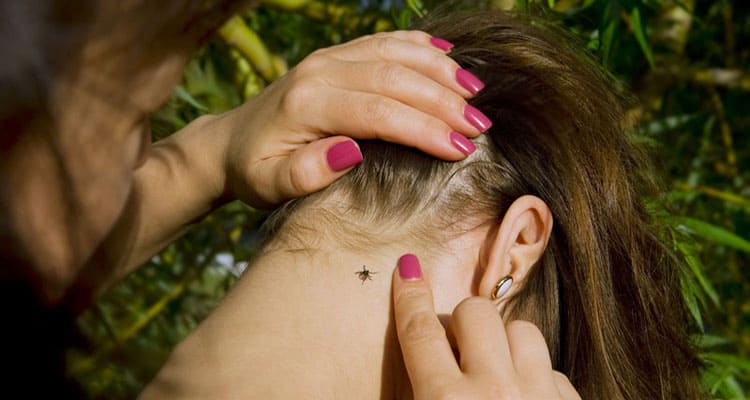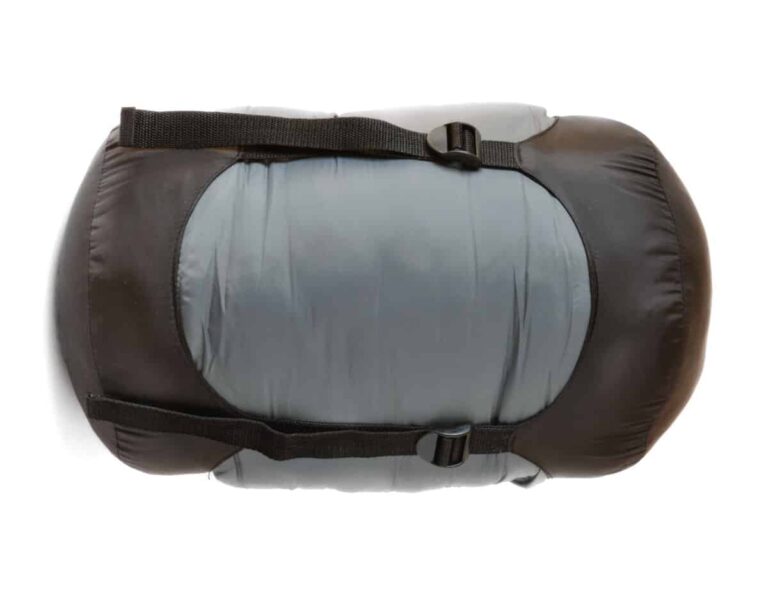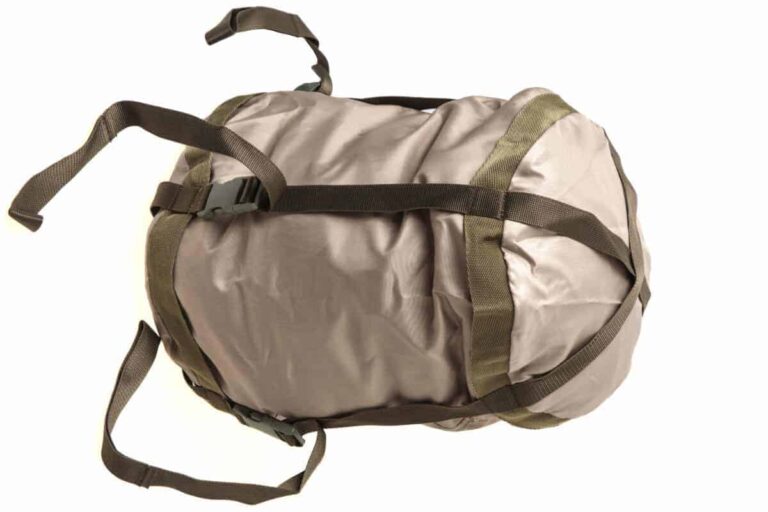How to Avoid Ticks When Camping
When you spend time outdoors, whether it be on a camping trip, day hike, or just a picnic in the park, there are a few pesky critters and insects that you are bound to encounter. At the top of the list are ticks, mosquitoes, and raccoons. Keep reading to find out how to avoid and deal with ticks when camping or even just in your backyard.
The most effective way to avoid ticks is to reduce skin exposure by wearing long-sleeved shirts and long pants as well as tucking your pants into your socks. Additionally, permethrin is an effective pesticide against ticks and can be used to treat clothing and camping equipment.
Going on a family camping trip can be lots of fun! That is until these pesky little blood suckers ruin the day. Don’t let ticks suck all the fun (and blood) out of your time spent in the woods! Keep reading to learn more about ticks and find out how to avoid them when camping and spending time outdoors once and for all.

How to Prevent Ticks in The First Place
The first and most effective line of defense in guarding against ticks, is to limit your exposure to them in the first place. Now I’m not saying that you need to cancel your summer camping trip, or become a hermit and stay inside all summer long. However, there are a few things that you can do that will help in preventing you or your pet becoming their main course.
This may sound dead simple… but… go when the ticks aren’t out.
I went on a 3 day hiking trip in Arkansas several years back, and we went in May. My friends that did this same trail were absolutely swarmed with ticks when they went in the summer.
Find out what times the ticks are the worst and avoid those times of the year.
If you are going to be out in the wild with ticks, here are the essential tips to stay tick free:
- Avoid setting up your campsite in an area with dense foliage or grass.
- If you decide to go on a hike, keep to the paths and out of the brush.
- Wear long-sleeved shirts and long pants with your pants tucked into your socks. You certainly won’t get any fashion award for this but ticks will have a much harder time getting to your skin.
- Don’t let your dogs run free through the woods, high grass, etc.
- Wear a good tick repellent. DEET has shown to be effective against ticks
- Treat your clothing and sleeping bag with permethrin (make sure you do this several days before you use it)
- Check yourself and your family regularly for ticks.
If you just do these seven things, you can greatly decrease your chances of getting bitten and having a disease transferred to you by a tick bite.
How To Avoid Ticks In The Woods
Grass grass grass–avoid grass. If you’re in tick season and if you can’t help but go through any grass, then you should wear long pants tucked into your socks.
Walk in the center of trails where the dirt is most compacted and avoid any loose organic matter such as piles of leaves or brush. CDC has some more ideas, here.
The Best Tick Repellant For Your Skin
Tick repellents work at repelling ticks for a short period of time, but only if they contain DEET.
DEET is by far the most commonly used ingredient found in insect repellents. The USDA, as well as the US Military conducted extensive research and determined that DEET was the most effective repellent against most biting insects, including ticks.
The Best Tick Repellant For Your Clothes
With that being said, I actually prefer to spray my clothing, including socks and shoes with Permethrin. Permethrin is both an insecticide and insect repellent that comes from the Chrysanthemum Flower. It’s most commonly found in Nix lice shampoo and in lotions that treat scabies.
While it’s highly toxic to ticks, it is safe for humans with proper usage! Studies have shown that it’s actually more safe than mosquito sprays that contain DEET.
If applied properly, Permethrin provides a quick tick knock-down effect – both repels and kills.
Not only do I spray this stuff on all of our clothing, but I also spray it on our bedding and even our tent.
The Permethrin spray that I use and also recommend is made by Sawyer Products. You can find it on Amazon through this link.
The special thing about permethrin is that it can last for weeks and even between washes. It will of course diminish in effectiveness overtime, but this is a great way to keep the ticks at bay for long periods of time.
How Effective is Tick Repellent Clothing?
Tick repellent clothing is extremely effective! That’s because the clothing companies use Permethrin to treat their clothing.
Supposedly, the Permethrin is woven into the fabrics, so that it will not wash out after you put the clothing in the wash. A few manufacturers websites claimed that their clothing is effective for up to 60 washes.
I honestly don’t know how true these statements are, since I’ve never bought any tick repellent clothing. I just can’t justify spending hundreds of dollars on tick repellent clothing, when I can buy a $15 bottle of spray and treat my own clothes. Not only that, but at least I know that the chemical is at its strongest.
How to Keep Ticks Away Naturally
If the thought of spraying chemicals all over yourself and your family make you a little uncomfortable, you do have a few choices. You can use an all-natural alternative, namely essential oils.
I personally have never tried the all-natural alternatives, so I had to do a bit of research to find out what the best natural tick repellent is.
While there were literally hundreds of different formulas and concoctions of essential oil repellents that others swear by, it seems that the best is also the simplest. It’s a mixture of Lemongrass oil and Eucalyptus Globulus oil.
To make this simple spray, all you have to do is mix 20 drops of the Lemongrass oil and 20 drops of the Eucalyptus Globulus oil with about a half cup of distilled water. Shake vigorously and voila! You now have your very own all-natural tick repellent.
How to Perform Tick Checks and Remove Them
Whenever you’ve spent time in the great outdoors, or even in your backyard (if you live in the country), it’s a good idea to perform a thorough tick check on yourself, your kids and even your dog. When I say thorough, I mean checking all the nooks and crannies, including your scalp and even your private areas.
Here are some ideas to give you a better idea of how thorough you need to be:
- Groin area
- Butt crack
- Belly Button
- Waistband line (this is a favorite hang out spot)
- Armpits
- Nape of the neck
- Head hair
Yeah… basically everywhere.
If you don’t find anything, it’s a good idea to check again in a few days. Ticks are really small, especially if you happen to get a smaller tick sucking on you. If you miss one the first time, it’s usually easier to spot them a second time around, as the area where they are feeding is usually red and swollen.
To remove a tick, you’ll need a good pair of sharp nose tweezers. You’ll want to grab the tick with the tweezers and slowly remove it, being careful not to break it off in the skin.
If You Find One Tick Will There Will Be More?
Ticks do not multiply and congregate like fleas and lice, so the chances of an infestation around your campground are slim. However, there are exceptions!
While there may not be an infestation, there is a chance that you or your dog could pick up more than one tick at a time, especially if you walk through tall grassy areas or dense brush.
Will Ticks Bite My Dog?
Yes, ticks can and will bite you do or any pet for that matter. If it has blood running through its veins, it’s open season.
You’ll want to check your dog, the same way that you would check yourself after spending time in the woods and remove any ticks with tweezers.
We’ve had ticks bite our dog and they swell up like huge grapes–it’s pretty awful.
How to Keep Your Dogs Safe From Ticks
Unlike ourselves, we need to protect our dogs from ticks regardless if we’re on a camping trip. That’s because most dogs will spend a good amount of time outdoors, playing and rolling around in the grass.
While there are many forms of tick repellents for dogs on the market, we like FRONTLINE PLUS FLEA AND TICK CONTROL. It’s super effective, lasting for up to 3 months and not only kills and prevents ticks, but will also kill 100% of fleas on your dog within 18 hours of being applied.
What Are The Different Types of Ticks
I just want to take a few minutes and talk about what exactly ticks are. They’re not insects as most people would think, but they are from the arachnid family. They are what’s called obligate blood feeders. This means that they feed only on blood and can stay attached to their hosts (you) for days until they are through feeding.
While there are somewhere round 850 ticks found around the world, there are only about 90 different species that can be found in the United States. Of these, there are only a few that can carry and pass on diseases to humans.
The most common include:
- Blacklegged Tick (also known as a Deer Tick)
- American Dog Tick
- Lone Star Tick
- Brown Dog Tick
- Wood Tick (also known as the Rocky Mountain wood tick)
Each one of these ticks can carry and transmit diseases that can be dangerous to humans and pets and should be taken seriously. If you do find one of these ticks on you, make sure to take the appropriate steps in removing it asap!
Do Ticks Really Carry Diseases
Yes they do! There are at least 16 different types of diseases that can be transmitted through a tick bite and all should be taken seriously.
Of these diseases, Lyme disease has long been the worst up until recently. There is a new-kid-on-the-block, which has experts sweating bullets. It’s called the Powassan virus.
This virus is much rarer, yet far more dangerous than Lyme disease.
It’s estimated that 60 percent of all cases lead to inflammation in the brain and can cause permanent disability or even death.
You can check out the full list at the Centers for Disease Control and Prevention.
Final Thoughts
If you plan on spending time in the woods, ticks are definitely something to take seriously! However, they shouldn’t prevent you from enjoying your camping trip with your family.
As long as you take the proper precautions, which include choosing a campsite that’s away from heavy brush and grass, you use tick repellents, wear the proper clothing, and you perform tick checks after coming in contact with tall grass and thick brush, you should be okay.





